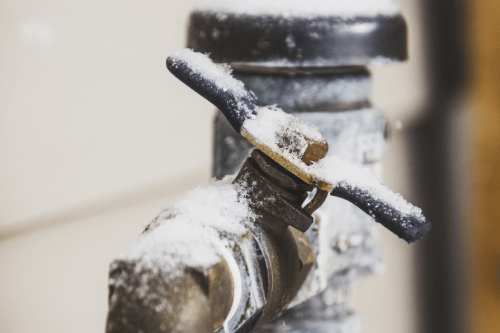Important Advice for Avoiding Frozen Pipes in Winter Conditions
Schedule Now!We've stumbled on this article pertaining to 6 Ways to Prevent Frozen Pipes down the page on the net and figured it made good sense to talk about it with you here.

Cold weather can wreak havoc on your plumbing, specifically by freezing pipes. Below's exactly how to prevent it from happening and what to do if it does.
Intro
As temperature levels decrease, the risk of icy pipelines increases, potentially causing costly repair services and water damages. Recognizing just how to stop icy pipes is essential for home owners in cold environments.
Recognizing Icy Pipes
What creates pipelines to ice up?
Pipes ice up when subjected to temperatures below 32 ° F (0 ° C) for extended periods. As water inside the pipes ices up, it broadens, putting pressure on the pipeline wall surfaces and potentially triggering them to break.
Dangers and problems
Icy pipes can bring about supply of water interruptions, home damages, and pricey repairs. Burst pipes can flood homes and cause substantial structural damage.
Indications of Frozen Water Lines
Determining icy pipelines early can stop them from bursting.
How to determine icy pipelines
Try to find decreased water flow from taps, uncommon smells or sounds from pipes, and visible frost on exposed pipes.
Prevention Tips
Protecting vulnerable pipelines
Cover pipelines in insulation sleeves or use heat tape to shield them from freezing temperatures. Concentrate on pipelines in unheated or external areas of the home.
Home heating techniques
Maintain interior spaces adequately heated up, particularly locations with plumbing. Open closet doors to allow warm air to distribute around pipes under sinks.
Safeguarding Outdoor Plumbing
Garden pipes and outside faucets
Detach and drain garden tubes before winter. Install frost-proof faucets or cover outdoor faucets with insulated caps.
What to Do If Your Pipelines Freeze
Immediate activities to take
If you presume frozen pipes, maintain taps available to ease stress as the ice thaws. Use a hairdryer or towels taken in hot water to thaw pipes gradually.
Long-Term Solutions
Architectural adjustments
Consider rerouting pipelines away from exterior walls or unheated areas. Include additional insulation to attic rooms, cellars, and crawl spaces.
Updating insulation
Invest in top notch insulation for pipelines, attic rooms, and wall surfaces. Correct insulation aids preserve constant temperatures and decreases the danger of icy pipes.
Conclusion
Preventing frozen pipelines needs positive measures and fast feedbacks. By comprehending the causes, indicators, and safety nets, home owners can secure their plumbing throughout cold weather.
5 Ways to Prevent Frozen Pipes
Drain Outdoor Faucets and Disconnect Hoses
First, close the shut-off valve that controls the flow of water in the pipe to your outdoor faucet. Then, head outside to disconnect and drain your hose and open the outdoor faucet to allow the water to completely drain out of the line. Turn off the faucet when done. Finally, head back to the shut-off valve and drain the remaining water inside the pipe into a bucket or container. Additionally, if you have a home irrigation system, you should consider hiring an expert to clear the system of water each year.
Insulate Pipes
One of the best and most cost-effective methods for preventing frozen water pipes is to wrap your pipes with insulation. This is especially important for areas in your home that aren’t exposed to heat, such as an attic. We suggest using foam sleeves, which can typically be found at your local hardware store.
Keep Heat Running at 65
Your pipes are located inside your walls, and the temperature there is much colder than the rest of the house. To prevent your pipes from freezing, The Insurance Information Institute suggests that you keep your home heated to at least 65 degrees, even when traveling. You may want to invest in smart devices that can keep an eye on the temperature in your home while you’re away.
Leave Water Dripping
Moving water — even a small trickle — can prevent ice from forming inside your pipes. When freezing temps are imminent, start a drip of water from all faucets that serve exposed pipes. Leaving a few faucets running will also help relieve pressure inside the pipes and help prevent a rupture if the water inside freezes.
Open Cupboard Doors
Warm your kitchen and bathroom pipes by opening cupboards and vanities. You should also leave your interior doors ajar to help warm air circulate evenly throughout your home.

I recently found that blog posting on Winter Plumbing Precautions: Preventing Frozen Pipes while surfing the internet. For those who enjoyed our blog posting please make sure you remember to pass it around. Many thanks for going through it.
Visit Page